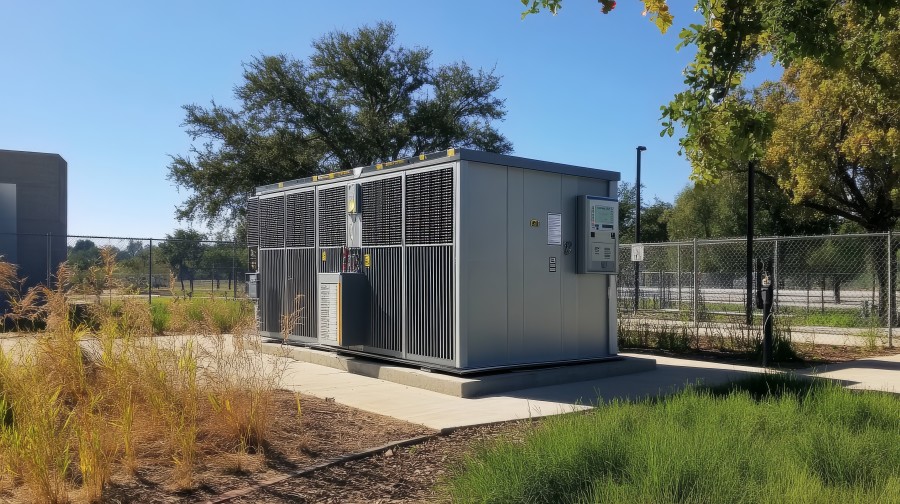In the vastness of Australia's landscape, remote communities have traditionally had difficulty maintaining a supply of reliable and sustainable energy. Those communities who are literally 'off the grid' have typically used diesel generators, which can present reliability problems such as mechanical failure stemming from the extreme weather conditions commonly encountered in regional Australia. In recent years, microgrids have become an increasingly popular replacement for generators, a trend which has been backed by Federal and State governments more and more due to the various benefits they can offer, including energy autonomy, reliability, security, and an overall reduction in emissions.1
What are microgrids?
Microgrids are small-scale energy systems in comparison to the main energy grids utilised by Australia's urban population. Microgrids can act as standalone systems, reducing the number of power outages with the ability to create energy independently using renewable sources such as solar and batteries, and allowing remote communities to reduce their dependence on extraneous resources such as generators.
How is Australia supporting microgrid investment?
Funding through programs such as the Regional Microgrids Program (facilitated by the Australian Renewable Energy Agency) and the federally funded Regional and Remote Communities Reliability Fund have respectively provided up to $125 million and $50 million and allowed for engagement with a broad range of stakeholders, including the National Indigenous Australians Agency.2
Challenges of transitioning to microgrids
The common obstacles faced by remote communities in widely rolling out microgrids go beyond funding restrictions - energy regulations and related legislation can be difficult to navigate when it comes to independent and self-sufficient power grids. For example, for remote communities, compliance with the National Energy Retail Law and National Energy Retail Rules requirements will mean those operating the microgrid will have to manage the consumer protections imposed on the energy retailers (in practice, being the community itself) in the National Electricity Market, and the civil penalties for breaches.3 The regulatory obligations change frequently and impose a range of requirements, from responsibilities for protecting healthcare customers requiring life support from outages through to support for financially challenged customers.
Regulated retail energy price caps also commercially affect microgrids. Retail electricity prices are subject to different regulation in all states and territories. For example, in the remote Marlinja community (approximately 700 kilometres south of Darwin), where a 100-kilowatt solar array and a 136Kwh battery supply energy to their microgrid, Northern Territory energy regulations prevent the Marlinja community from selling surplus energy to the main electricity grid.4 In some states and territories, those price caps also apply to microgrids, while in other jurisdictions they only apply to customers connected to the National Electricity Market. With higher costs involved in supplying to remote microgrid customers, price regulation may result in prices being capped at below the operator’s costs unless they have access to other funding to assist with subsidising costs.
Microgrids as a vehicle for agency
Overcoming these regulatory and cost challenges could present unique opportunities for regional communities. For example, beyond a reliable and self-sustaining source of energy, the installation and maintenance of microgrid systems offers employment opportunities and can particularly benefit the local community where there is upskilling and investment in the local workforce.
Each community may have different objectives when it comes to embracing microgrid energy generation, and therefore, the real benefit lies in an opportunity to express agency in a regionally-specific manner. On the one hand, where the Marlinja community (possessing the first Indigenous-owned microgrid) has demonstrated tangible benefits in supporting schools, cattle stations, and economic development through localised energy sharing schemes (supported by Indigenous organisations such as Original Power), Cobargo in southern NSW and Yackandandah in northeast Victoria have (following the experience of the 2019 bushfires) utilised microgrid-generated energy to consistently stabilise energy costs, emissions, and grid outages.5
The benefits of unlocking funding for these regional microgrid projects are starting to show, for example under the $330 million 'Powering the Regions Fund', a federal government initiative.6 This fund is projected to create hundreds of part-time and full-time jobs within microgrid stations, such as in Western Australia where $35 million has been allocated to the hybrid renewable energy and battery storage project at Murrin Murrin to power cobalt and nickel extraction.7 The investment in microgrid-generated energy is also expected to significantly reduce emissions where these regional businesses are traditionally reliant on fossil fuels (by approximately 830,000 tonnes per year).8
An emerging and viable option to maintain power for remote regions, microgrids utilise and integrate renewable energy sources to improve reliability, resilience, and independence. Microgrids represent one of the many paths Australia has and continues to follow in its pursuit of a sustainable future of energy production and supply, as well as an emerging option for remote communities to develop autonomously.
Legal expertise in the broader rollout of microgrids across Australia spans several sectors including drawing together transactions, development, regulatory compliance, and funding, facilitating the planning and delivery of energy transition projects throughout Australia.
Lander & Rogers assists a variety of parties in the renewable energy projects space. Please contact us if your business requires assistance.
1 See: https://insight.study.csu.edu.au/microgrids/
2 See: https://arena.gov.au/blog/microgrids-cheaper-cleaner-reliable-energy-for-remote-communities/; https://www.dcceew.gov.au/energy/programs/regional-remote-communities-reliability-fund
3 See: https://energyinnovationtoolkit.gov.au/article/use-case/microgrids
5 Ibid.
6 See: https://minister.dcceew.gov.au/bowen/media-releases/330m-investment-australian-heavy-industry-future
7 Ibid.
8 Ibid.
All information on this site is of a general nature only and is not intended to be relied upon as, nor to be a substitute for, specific legal professional advice. No responsibility for the loss occasioned to any person acting on or refraining from action as a result of any material published can be accepted.
 Client portal
Client portal
















